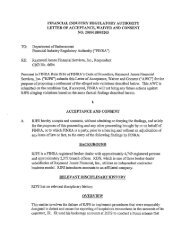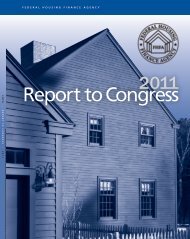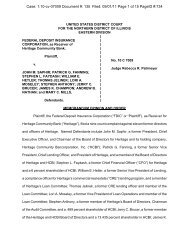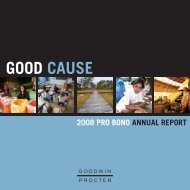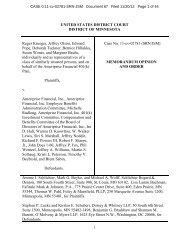Here - Goodwin Procter LLP
Here - Goodwin Procter LLP
Here - Goodwin Procter LLP
You also want an ePaper? Increase the reach of your titles
YUMPU automatically turns print PDFs into web optimized ePapers that Google loves.
DIP LOANS: A NEW POCKETBOOK FOR DISTRESSED MUNICIPALITIES?<br />
By: Manny Grillo<br />
In most large bankruptcy reorganizations, the entity filing for protection (known in bankruptcy lingo as the debtor in<br />
possession or “DIP”) requires new funding to finance the costs of the Chapter 11 case. Known as “DIP Loans,” this type of<br />
financing is almost always secured by senior liens on the debtor’s assets. Special opportunity investment funds dominate the<br />
landscape and provide much of the capital for these loans. In recent weeks, municipalities, such as Scranton, Pennsylvania,<br />
facing significant short-term liquidity crises, have started to reach out to hedge funds as possible lending sources. This<br />
raises the question as to whether municipalities will seek DIP Loans in Chapter 9 municipal bankruptcy cases, and, if so, on<br />
what basis?<br />
While not all of the provisions of the Bankruptcy Code apply in Chapter 9 cases, Section 901 of the Bankruptcy Code, makes<br />
Sections 364(c) and (d) of the Bankruptcy Code applicable to Chapter 9 municipality bankruptcy cases. Under these<br />
provisions, a debtor may borrow money on a senior secured (and even a priming) basis. Therefore, a court could grant an<br />
order authorizing a municipal debtor to borrow money and grant senior security interests in its assets.<br />
Municipalities typically borrow funds on a variety of bases and Scranton recently issued a tax anticipation note (TAN), a<br />
practice it has used in the past, to cover payroll as part of its recovery plan. Unlike an “all assets” superpriority lien that is<br />
common with DIP Loans in Chapter 11 reorganization proceedings, it remains to be seen what will happen if Scranton’s<br />
economic recovery plan and the anticipated tax revenue to support the TANs falls short of expectations. Will Scranton or<br />
another municipality look to the investment funds experienced in the distressed lending arena to provide DIP Loan financing?<br />
Can the investment funds get comfortable with any pledge of collateral for the DIP Loan that a municipality may make?<br />
As part of these transactions, DIP Lenders typically ask for a variety of other protections such as budgets and performance<br />
covenants based upon these budgets. While courts can order debtors to comply with such provisions in most Chapter 11<br />
cases in which DIP Loans are authorized, potential DIP Lenders in Chapter 9 cases should realize that the court’s power<br />
over a municipal debtor may be limited. Under Section 904, absent the municipal debtor’s consent, the court may not<br />
“interfere” with any of the “property or revenues of the debtor” or its “use or enjoyment of any income producing property.”<br />
While a debtor might consent to the terms of the DIP Loan when made, will the municipality consent to the type of actions<br />
lenders are normally permitted to take upon default? When underwriting a DIP Loan, DIP lenders carefully scrutinize their<br />
ability to exercise remedies against their collateral. Will a bankruptcy court allow a DIP Lender to do that in a municipal<br />
case? We may find out sooner rather than later.<br />
FOR MORE ANALYSIS AND COMMENTARY VISIT MUNIBK at http://blog.munibk.com/



